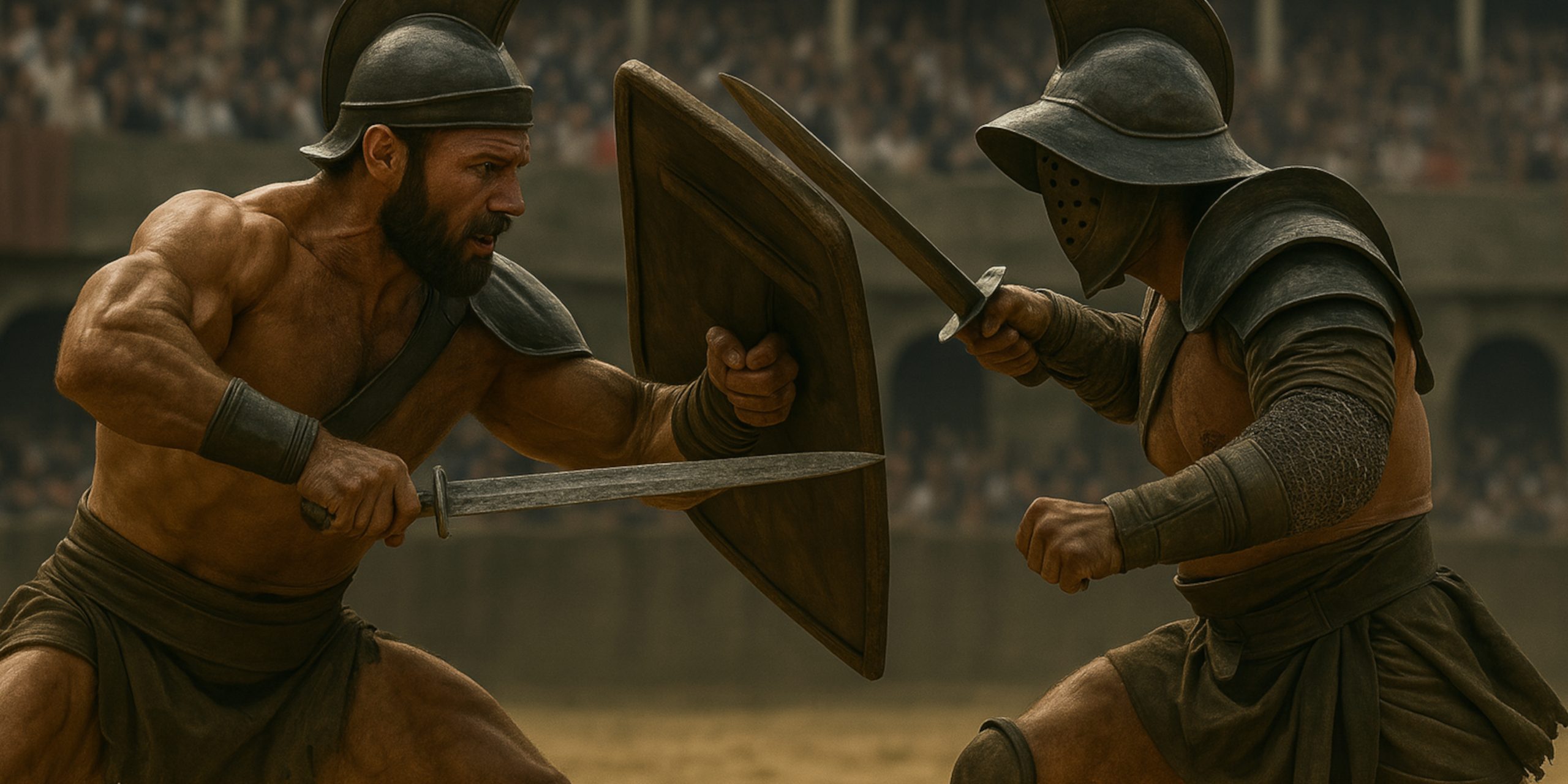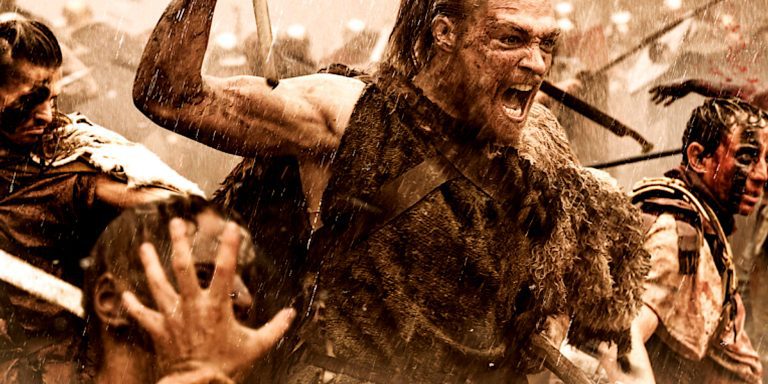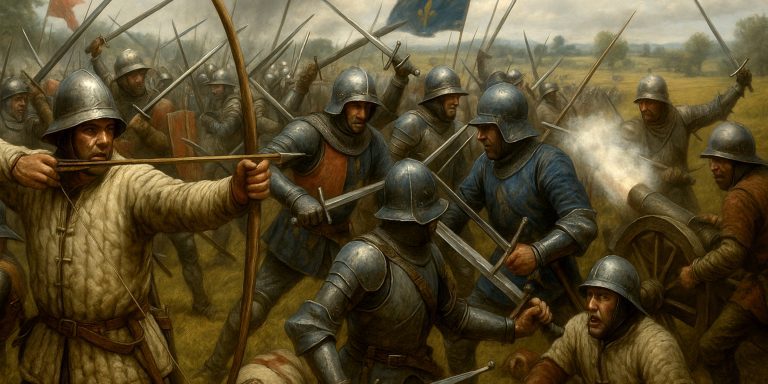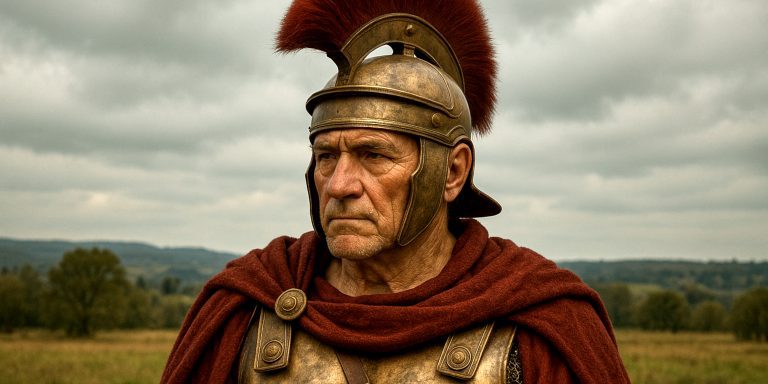
Spartacus remains one of history’s most compelling rebels. A Thracian gladiator who led a slave uprising against Rome, his name has become a symbol of resistance. Yet for all the attention he’s received, especially in television and film, the real Spartacus is still obscured by legend and misunderstanding. This article separates fact from fiction and examines how his story has been reshaped over time, including through the lens of popular culture.
Spartacus in Popular Culture: The TV Show Influence
Starz’s Spartacus series (2010–2013) introduced the rebel gladiator to a new generation. Its depiction is bloody, stylised, and emotionally charged, but not always accurate. The show leans heavily on dramatic licence, adding characters and relationships not recorded by ancient sources. It portrays Spartacus as a brooding hero driven by personal vengeance, with elaborate speeches and hyper-violent battles.
While visually striking, the series prioritises entertainment over historical detail. It amplifies the sense of Spartacus as a lone saviour rather than a military strategist working within a broader rebel structure. That said, the show does engage with themes of power, loyalty, and rebellion that echo the spirit of the historical Spartacus, if not always the facts.
7 Facts About Spartacus
1. Spartacus was Thracian, not Roman
He came from Thrace, a region covering parts of modern Bulgaria, Greece, and Turkey. His early life likely involved military service before being enslaved by Rome.
2. He was sold into slavery and trained as a gladiator
Captured and enslaved, Spartacus was sent to a gladiator school in Capua. Conditions were brutal, and fighters were often worked to death for public entertainment.
3. He escaped with around 70 fellow gladiators
In 73 BCE, Spartacus and a small group broke free using kitchen tools and stolen weapons. The revolt began not with a vast army but with a daring breakout.
4. His army grew to tens of thousands
As Spartacus moved across southern Italy, his forces swelled with escaped slaves, disenfranchised peasants, and even some deserters. At its peak, his army may have numbered over 70,000.
5. He defeated multiple Roman legions
Spartacus outmanoeuvred and out-fought several Roman commanders, including Gaius Claudius Glaber and Publius Varinius. His tactical sense allowed his smaller force to repeatedly embarrass Rome’s military.
6. His goal may have been escape, not conquest
Some ancient sources suggest Spartacus wanted to lead his people out of Italy, possibly to Gaul or Thrace. The idea of toppling Rome itself seems to have come later, if at all.
7. He died in battle, not by crucifixion
Unlike many of his followers who were crucified along the Appian Way, Spartacus likely fell in combat during the final battle against Marcus Licinius Crassus in 71 BCE. His body was never definitively identified.
7 Myths About Spartacus
1. Spartacus wanted to destroy Rome
There’s no solid evidence he aimed to overthrow the Roman Republic. His actions suggest he sought freedom rather than imperial destruction.
2. He was a lone revolutionary
Spartacus was one of several leaders, including Crixus and Oenomaus. The revolt was not his vision alone, but a collective rebellion with shifting strategies and internal divisions.
3. He freed every slave he encountered
While many joined his ranks, Spartacus also left some slaves behind, and his forces sometimes plundered Roman estates. This was not a uniformly altruistic movement.
4. His wife played a major role in the revolt
Plutarch briefly mentions a Thracian woman who claimed to have prophetic dreams, but she disappears from the historical record. The TV show’s focus on her is fictional embellishment.
5. Spartacus was crucified
This fate befell thousands of his captured followers, but not Spartacus himself. The myth persists, likely due to its symbolic weight.
6. He was a proto-communist or class warrior
Some 19th and 20th-century thinkers painted Spartacus as a class-conscious revolutionary. In truth, his aims were personal freedom and survival, not political ideology.
7. His rebellion almost brought down the Republic
Though disruptive and humiliating for Rome, the rebellion was never close to toppling the government. It exposed weaknesses, but the Republic’s foundations remained intact.
The Seven Swords takeaway
Spartacus was neither a one-dimensional hero nor a mythic saviour. He was a skilled leader navigating desperate circumstances. His story, shaped by both ancient chroniclers and modern storytellers, reflects the tensions between freedom and authority, rebellion and order. The real Spartacus remains elusive, but what we do know reveals a figure far more complex than his legend.
Watch the TV trailer:



